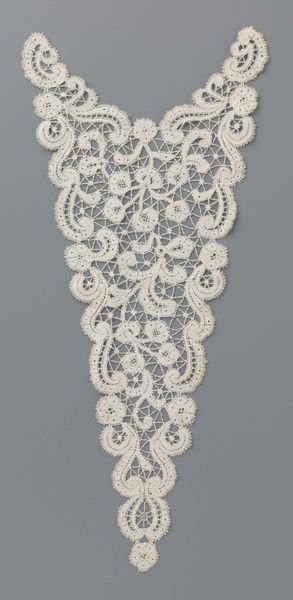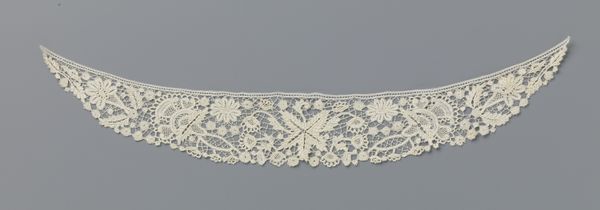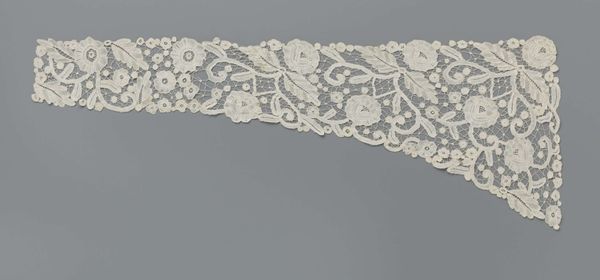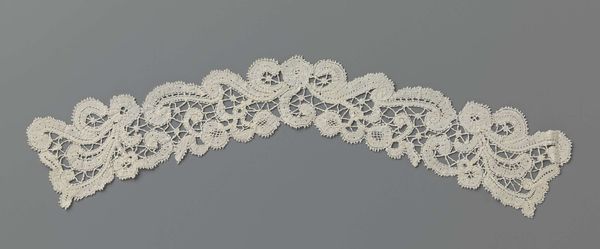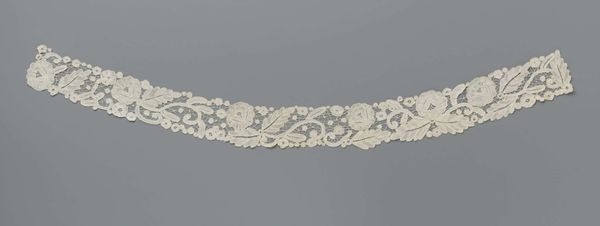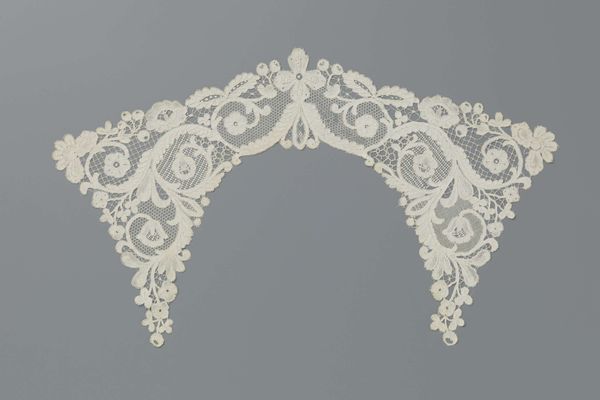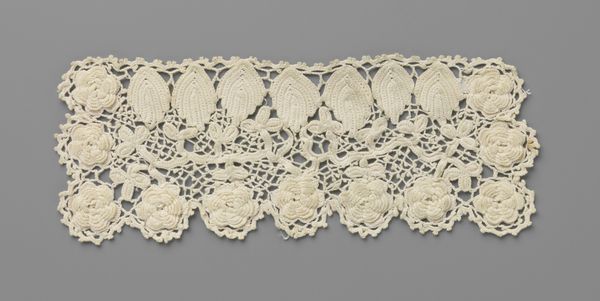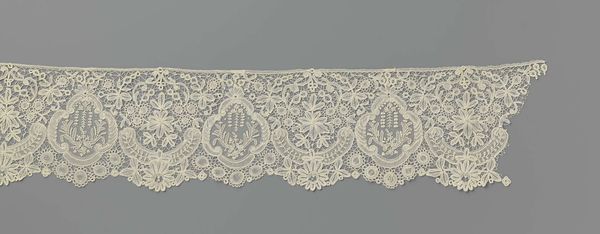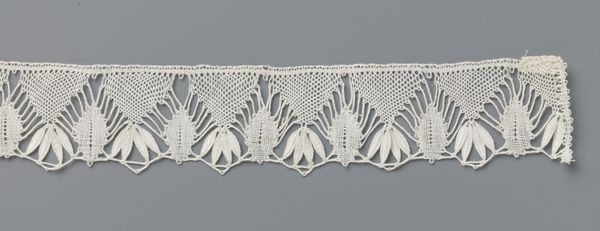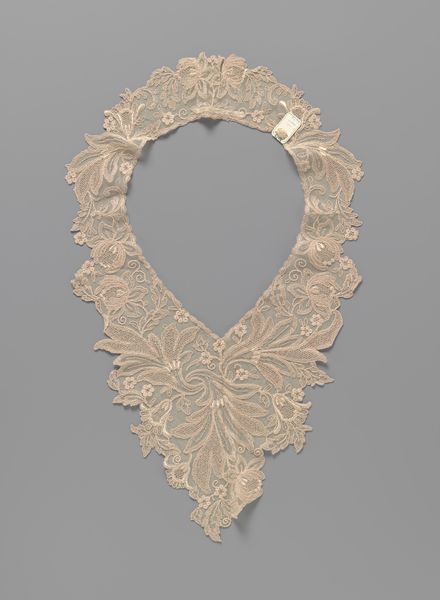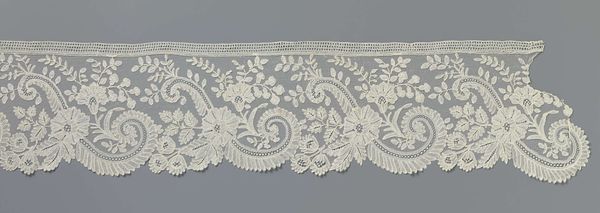
fibre-art, weaving, textile
#
fibre-art
#
random pattern
#
weaving
#
textile
#
pattern design
#
repetitive shape and pattern
#
repetition of pattern
#
intricate pattern
#
regular pattern
#
pattern repetition
#
decorative-art
#
layered pattern
#
funky pattern
#
combined pattern
Dimensions: height 28 cm, width 13 cm
Copyright: Rijks Museum: Open Domain
Curator: Look at this stunning vest—dating back to around 1915—fashioned entirely from bobbin lace. Notice the intricate design, the drielobbige waaierbloemen, those fabulous three-lobed fan flowers. Isn't it just the epitome of elegance? Editor: It’s so delicate. There’s an almost ethereal quality to the repeating patterns. Though… looking at it now, I’m wondering, how much sheer labour and patience must have gone into crafting something like this? It seems impossible. Curator: Indeed! And you feel the feminine energy resonating, don't you? These were the times, you see. Editor: Definitely a reflection of the societal constraints of women at the time. This intricate, detailed work – confined to domestic spaces - was often their only means of creative expression. Think of the hidden messages, or not, carefully placed within the pattern's weave. Was she consciously weaving her experiences, hopes, rebellions into this piece? Curator: A garment became a canvas for her emotions, that’s delightful. But the flowers, those stylized fans! Do you feel that it represents hidden secrets, whispered hopes, or maybe even a touch of rebellion masked by polite decorum? It’s whispering untold tales of its creation, surely. Editor: Absolutely, a form of quiet resistance or, maybe just a means of self-preservation through creative occupation. This work wasn't just adornment. It becomes a complex artifact, carrying histories and unspoken narratives with its repetitive motifs and fragile threads. Curator: It is just extraordinary when you consider what was going on in the world. Imagine the artist diligently crafting this piece during that tempestuous era! Now, doesn't that amplify its profound beauty? The resilience! The heart! The sheer bloody audacity! Editor: Right, that’s how material culture offers critical insight, offering the ability to explore social, historical and political climates of this vest's conception and usage. So, how might we situate these works into critical, intersectional narratives? Curator: Yes! It certainly is so wonderful. Now, I'm off to grab myself a celebratory cocktail in honor of the artist who created this. Editor: I’m already thinking about how we can better integrate historical and cultural research in order to emphasize the need for nuanced discourse that focuses on class, race, and gender. Let's keep digging deeper.
Comments
No comments
Be the first to comment and join the conversation on the ultimate creative platform.
